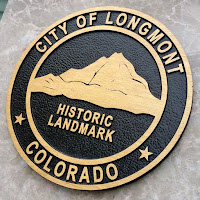Investing in Longmont? Consider the Strategic Risks and Rewards
by Osman Parvez
—-
Longmont is the place to be. Downtown is booming and more trendy restaurants, breweries, art galleries, and boutique retailers are opening by the day. Longmont has beautiful family friendly community spaces and multi-use paths. It also has fewer transient issues and noticeably fewer tourists than Boulder. In short, it’s attractive and affordable. From the southwest corner of town, it’s only about a fifteen minute drive to Google’s new campus.
It’s also about to get much better in the future.
As House Einstein’s business continues to expand throughout Boulder County, I find myself increasingly advising investment oriented buyers and sellers considering Longmont. Two strategic risks stand out: a broad post-election slowdown in the general economy causing a (likely short and shallow) real estate downturn and political mismanagement of redevelopment and renewal, particularly in critical locations such as South Main Station.
Of the two, redevelopment risk is larger because mistakes take forever to fix. In some cases, they are permanent. Real estate cycles come and go. A potentially blighted downtown with ugly or worse, empty buildings is much more problematic in the long-term. Luckily, Longmont’s politicians seem grounded in reality and focused on making tangible improvements. To point, Longmont already has municipal fiber and a municipal utility. Longmont even wins awards for snow and ice removal. In contrast, Boulder is busy acquiring pricey downtown offices (for even more city staffers) and debating term limits for Council. Snow removal is your problem.
Phase 1 of the $66.5MM South Main Station project calls for 314 high- end apartments and 9,300 SQFT of commercial space. Construction has been delayed about 6 months and is now expected to begin before December 1st (delay was blamed on Xcel and subterranean “surprises“). The project now appears to be on track. If it successfully attracts high-rent tenants, it will add more fuel to Longmont’s rapid gentrification.
The Whole Foods Factor
If you’re tracking Longmont real estate, pay attention to the scheduled opening of Whole Foods at Village at the Peaks. The store now appears set to unlock its doors before the end of the year but when the delay was announced last December, it caught many off guard.
According to their latest 10Q, WFM is currently operating 432 stores and has 106 stores in the current store development pipeline. Their growth strategy is through new store openings, with a long term target of 1,200 Whole Food Markets (more if you count the 365 format stores). This makes sense, given that competition is putting pressure on store sales and margins are declining. In other words, unless they change their strategy, WFM will need to keep opening stores and, luckily for Longmont, they appear to have enough free cash generated from operations to do so.
Sounds promising. Expect the store to open on schedule.
More Points to Ponder:
– According to City Planners, Longmont is expected to add approximately 24,165 new residents by 2035. This will make Longmont the largest city in Boulder County. While Boulder retains more economic activity with CU, federal labs, and a vibrant tech startup community, Longmont is often where people with families are choosing to live. Expect the influx of buyers seeking to escape Boulder’s high prices to continue.
– Longmont’s strategic plan (see link below) is to maintain a compact growth pattern by focusing on infill and redevelopment, and reinvestment in the City’s historic, vacant, or underutilized buildings. Mixed-use, high density with easy walkability and transit options will likely be a key part of the plan and adjacent neighborhoods will become more attractive. This is one of the reasons I keep referring to Old Town as the new Mapleton Hill.
– Longmont intends to preserve more open space and agricultural lands through the City’s open space program and by coordinating with landowners. Sound familiar? The green doughnut is a big driver behind Boulder real estate’s long term high appreciation rate. It will also help Longmont’s desirability while limiting future build-out.
– The timing of the next downturn in the broad economy and the real estate cycle is critical to the momentum of Longmont. Your real estate objectives (and capabilities) may or may not line up with the cycle. This is a big topic and better for an in-person discussion. If you’d like to have a private conversation, reach out to me at osman@realtyunique.com or go ahead and book a time for a phone conversation by clicking HERE. My goal is to help you make a smarter real estate decision.
Recommended Reading
Envision Longmont Strategic Plan (Strongly Recommended)
Longmont Urban Renewal Authority (2015 Annual Report)
Longmont Development Log (August 2016)
Longmont Sustainability Plan (Draft, July 2016)
1st and Main Station Transit Development Study (2012, but still useful)
—-
Ready to buy or sell? Schedule an appointment or call 303.746.6896.
You can also like our Facebook page or follow us on Twitter.
As always, your referrals are deeply appreciated.
—
The ideas and strategies described in this blog are the opinion of the writer and subject to business, economic, and competitive uncertainties. We strongly recommend conducting rigorous due diligence and obtaining professional advice before buying or selling real estate.
Investing in Longmont? Consider the Strategic Risks and Rewards
by Osman Parvez
—-
Longmont is the place to be. Downtown is booming and more trendy restaurants, breweries, art galleries, and boutique retailers are opening by the day. Longmont has beautiful family friendly community spaces and multi-use paths. It also has fewer transient issues and noticeably fewer tourists than Boulder. In short, it’s attractive and affordable. From the southwest corner of town, it’s only about a fifteen minute drive to Google’s new campus.
It’s also about to get much better in the future.
As House Einstein’s business continues to expand throughout Boulder County, I find myself increasingly advising investment oriented buyers and sellers considering Longmont. Two strategic risks stand out: a broad post-election slowdown in the general economy causing a (likely short and shallow) real estate downturn and political mismanagement of redevelopment and renewal, particularly in critical locations such as South Main Station.
Of the two, redevelopment risk is larger because mistakes take forever to fix. In some cases, they are permanent. Real estate cycles come and go. A potentially blighted downtown with ugly or worse, empty buildings is much more problematic in the long-term. Luckily, Longmont’s politicians seem grounded in reality and focused on making tangible improvements. To point, Longmont already has municipal fiber and a municipal utility. Longmont even wins awards for snow and ice removal. In contrast, Boulder is busy acquiring pricey downtown offices (for even more city staffers) and debating term limits for Council. Snow removal is your problem.
Phase 1 of the $66.5MM South Main Station project calls for 314 high- end apartments and 9,300 SQFT of commercial space. Construction has been delayed about 6 months and is now expected to begin before December 1st (delay was blamed on Xcel and subterranean “surprises“). The project now appears to be on track. If it successfully attracts high-rent tenants, it will add more fuel to Longmont’s rapid gentrification.
The Whole Foods Factor
If you’re tracking Longmont real estate, pay attention to the scheduled opening of Whole Foods at Village at the Peaks. The store now appears set to unlock its doors before the end of the year but when the delay was announced last December, it caught many off guard.
According to their latest 10Q, WFM is currently operating 432 stores and has 106 stores in the current store development pipeline. Their growth strategy is through new store openings, with a long term target of 1,200 Whole Food Markets (more if you count the 365 format stores). This makes sense, given that competition is putting pressure on store sales and margins are declining. In other words, unless they change their strategy, WFM will need to keep opening stores and, luckily for Longmont, they appear to have enough free cash generated from operations to do so.
Sounds promising. Expect the store to open on schedule.
More Points to Ponder:
– According to City Planners, Longmont is expected to add approximately 24,165 new residents by 2035. This will make Longmont the largest city in Boulder County. While Boulder retains more economic activity with CU, federal labs, and a vibrant tech startup community, Longmont is often where people with families are choosing to live. Expect the influx of buyers seeking to escape Boulder’s high prices to continue.
– Longmont’s strategic plan (see link below) is to maintain a compact growth pattern by focusing on infill and redevelopment, and reinvestment in the City’s historic, vacant, or underutilized buildings. Mixed-use, high density with easy walkability and transit options will likely be a key part of the plan and adjacent neighborhoods will become more attractive. This is one of the reasons I keep referring to Old Town as the new Mapleton Hill.
– Longmont intends to preserve more open space and agricultural lands through the City’s open space program and by coordinating with landowners. Sound familiar? The green doughnut is a big driver behind Boulder real estate’s long term high appreciation rate. It will also help Longmont’s desirability while limiting future build-out.
– The timing of the next downturn in the broad economy and the real estate cycle is critical to the momentum of Longmont. Your real estate objectives (and capabilities) may or may not line up with the cycle. This is a big topic and better for an in-person discussion. If you’d like to have a private conversation, reach out to me at osman@realtyunique.com or go ahead and book a time for a phone conversation by clicking HERE. My goal is to help you make a smarter real estate decision.
Recommended Reading
Envision Longmont Strategic Plan (Strongly Recommended)
Longmont Urban Renewal Authority (2015 Annual Report)
Longmont Development Log (August 2016)
Longmont Sustainability Plan (Draft, July 2016)
1st and Main Station Transit Development Study (2012, but still useful)
—-
Ready to buy or sell? Schedule an appointment or call 303.746.6896.
You can also like our Facebook page or follow us on Twitter.
As always, your referrals are deeply appreciated.
—
The ideas and strategies described in this blog are the opinion of the writer and subject to business, economic, and competitive uncertainties. We strongly recommend conducting rigorous due diligence and obtaining professional advice before buying or selling real estate.
Share This Listing!
More about the author
Osman Parvez
Owner & Broker at House Einstein as well as primary author of the House Einstein blog with over 1,200 published articles about Boulder real estate. His work has appeared in the Wall Street Journal and Daily Camera.
Osman is the primary author of the House Einstein blog with over 1,200 published articles about Boulder real estate. His work has also appeared in many other blogs about Boulder as well as mainstream newspapers, including the Wall Street Journal and Daily Camera. Learn more about Osman.
Work with
House Einstein
Thinking about buying or selling and want professional advice?
Call us at 303.746.6896
Your referrals are deeply appreciated.
















